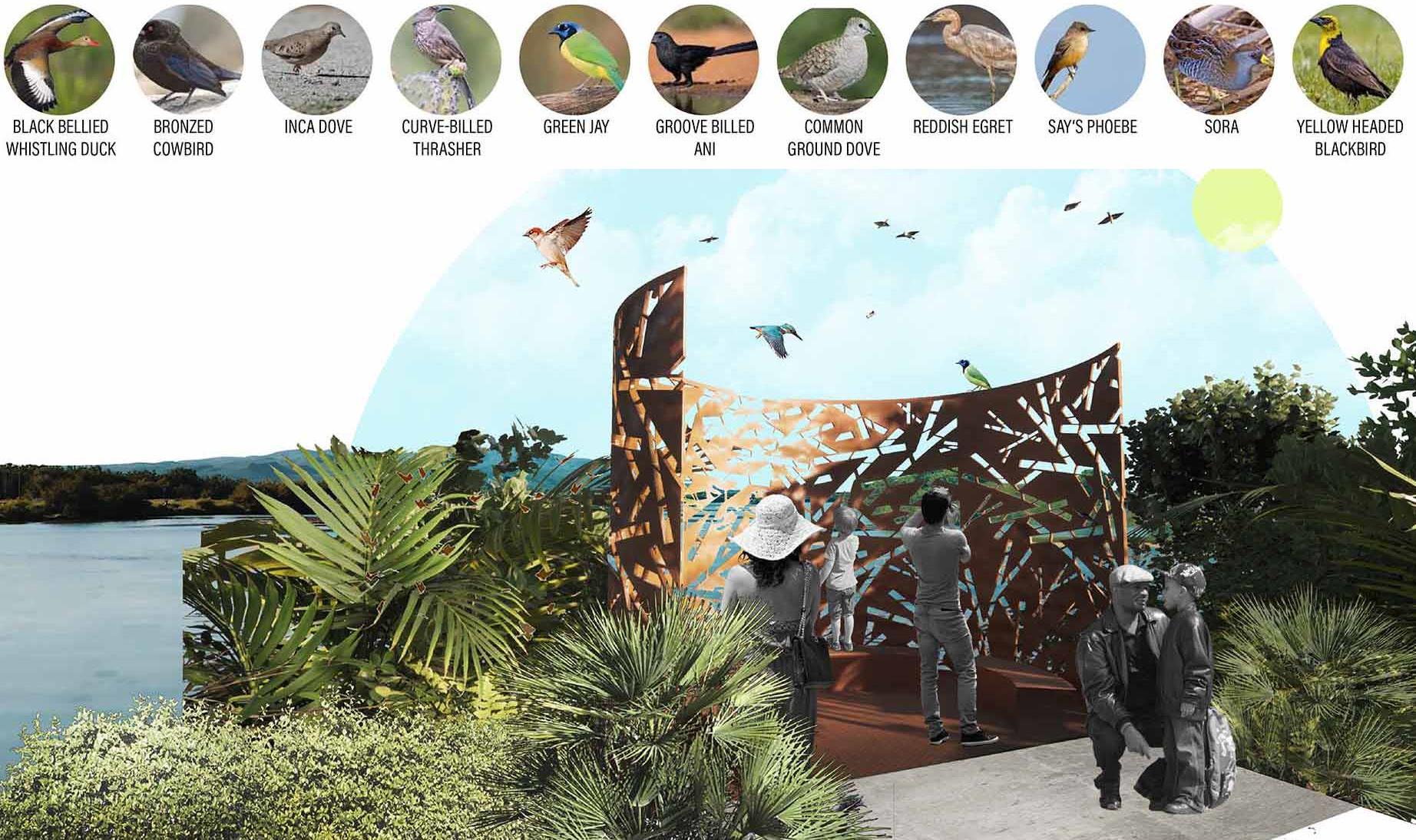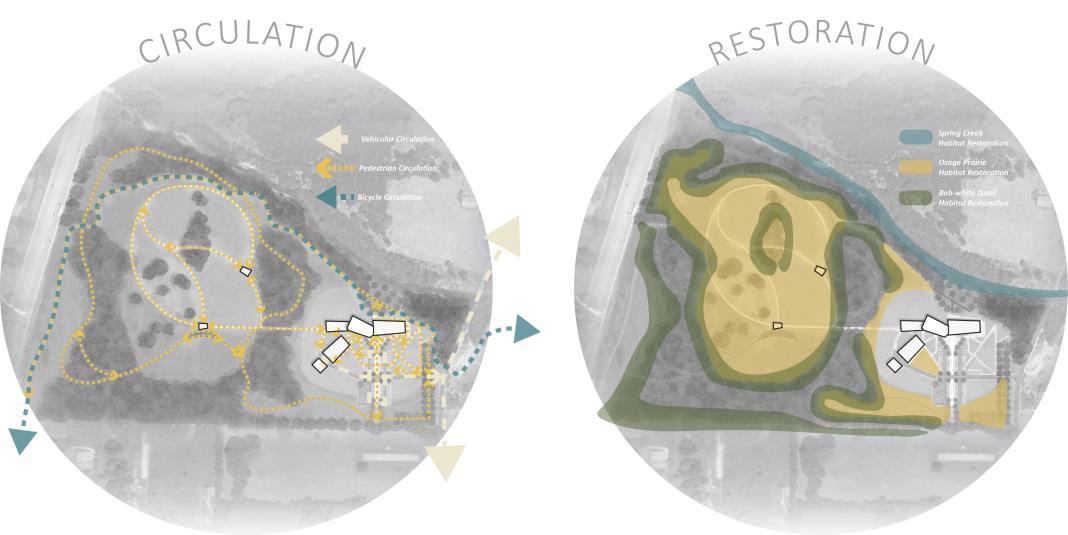
3 minute read
LandynGreen,Student DepartmentofLandscapeArchitecture, FayJonesSchoolofArchitecture+Design, UniversityofArkansas
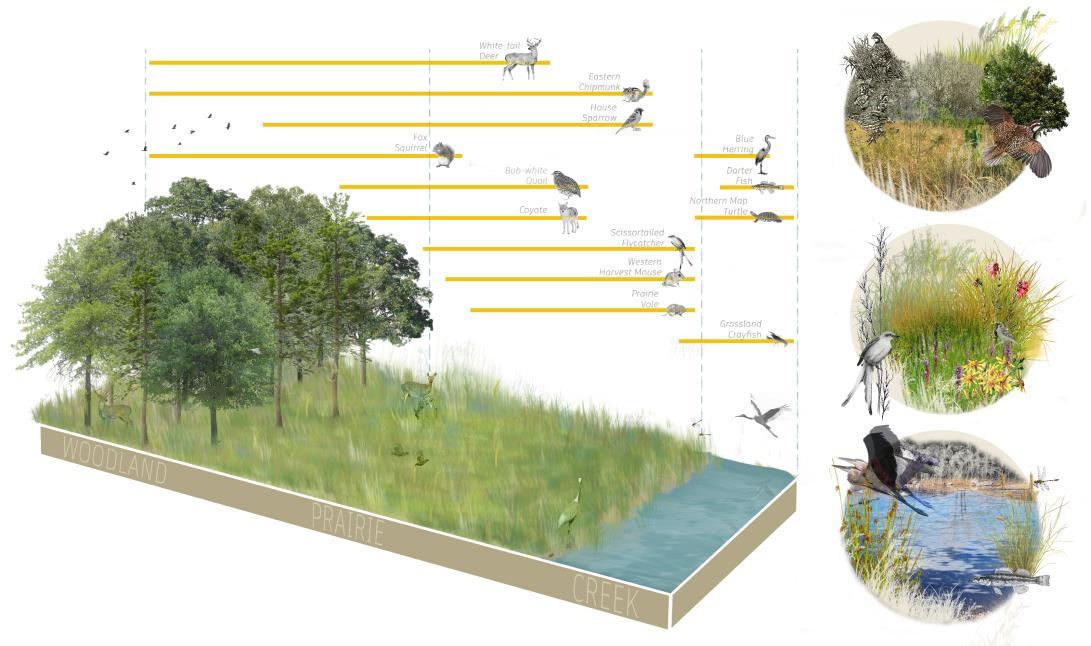
The JB and Johnelle Hunt Family Nature Center is one of many nature centers owned by the Arkansas Game and Fish Commission The center’s mission is to conserve and enhance Arkansas’s fish and wildlife and their habitats while promoting sustainable use and public understanding and support. Although public education and understanding is a key goal in the nature centers’ mission, when it comes to performance, the mission and reality don’t necessarily lineup. This is partially due to the Ozark Highland Nature Center being built so recently (in2020) and its location in remote proximity in relation to the rest of Springdale. Research, analysis, inventory, and conversations were vital when answering questions related to ecology on and around the Spring-Osage Creek Watershed, potential users of the nature center, what types of land uses are in the area, and how the site is connected to Springdale and the Northwest Arkansas region.
Advertisement
A key element in the design process was recognizing and truly understanding the area that surrounds the Ozark Highland Nature Center Group discussions were held on site with members of the Hispanic/Latinx community as well as field biologists and stream habitat coordinators from the Arkansas Game and Fish Commission. These conversations were extremely valuable for the fundamental phases of design. Reconcile + Renew specifically emphasizes ecotones and restoring the Osage Prairie, Bob-White quail habitat, and the aquatic ecosystem within Spring Creek, while simultaneously working to create a connected network among different demographic communities Habitat restoration is essential in renewing the relationship between the prairie, woodland, and creek flora with the charismatic fauna of the region This design is a blended blueprint of continuous conservation efforts by the Arkansas Game and Fish Commission and research done in collaboration with the Springdale community: reconciling people and ecology.
RECONCILE + RENEW: JB & JOHNELLE HUNT OZARK HIGHLANDS NATURE CENTER
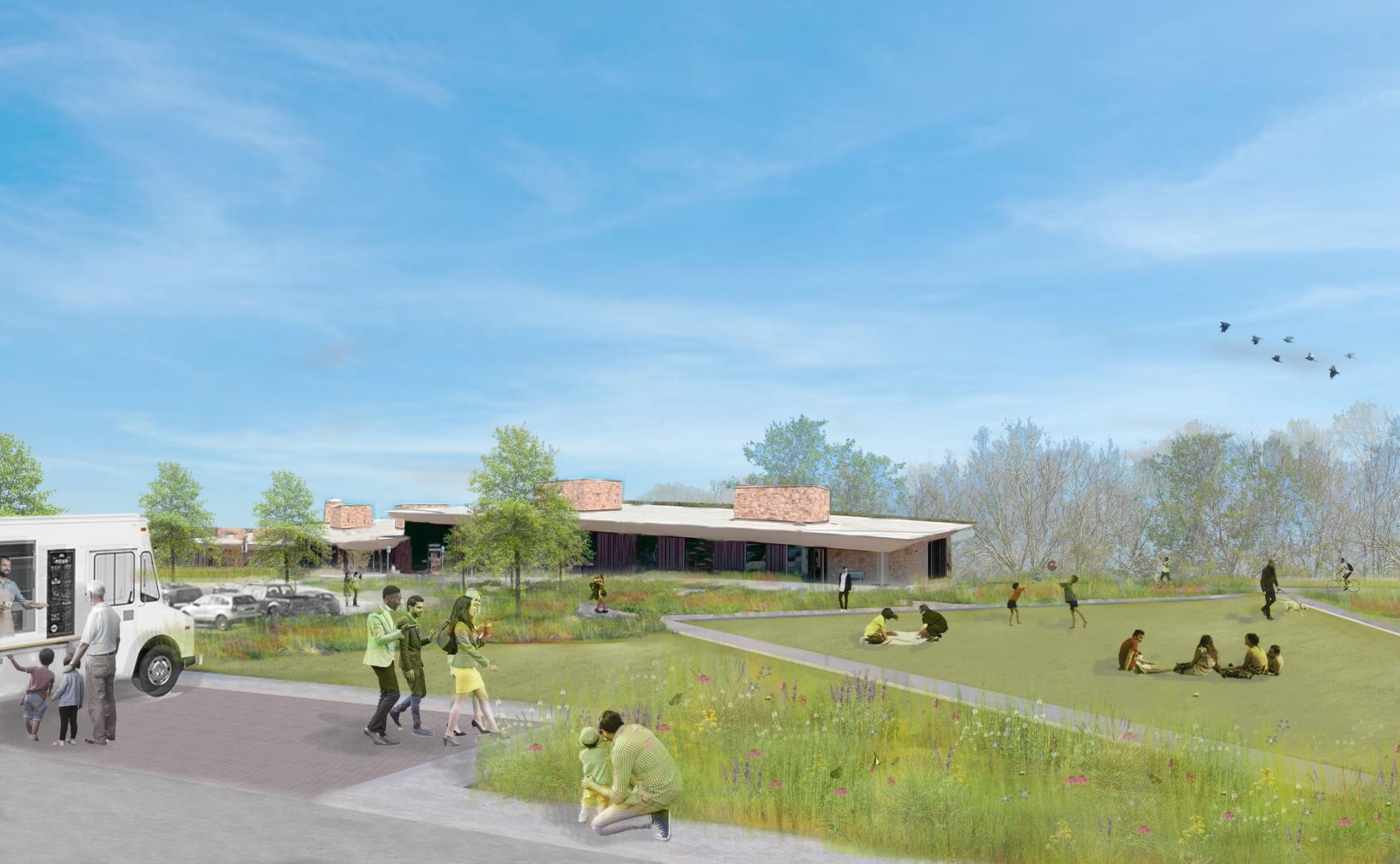
Springdale, Arkansas
Parks, Recreation & Open Space Design: Student - MERIT AWARD
JoinerDotson&SabaRostami-Shirazi,Students, DepartmentofLandscapeArchitecture, FayJonesSchoolofArchitecture+Design, UniversityofArkansas
This project provides a framework to restore and revitalize urban meander habitats in the Lower Rio Grande/Bravo Delta. The project aims to create an ecological network connecting high-value natural and cultural landscapes responding to the local community's economic, social, and cultural needs. The network created by the project will have the potential for economic growth by creating new ecologically oriented businesses. The greenway to be created engages urban areas and creates patches and corridors of natural habitat and paths also running through rural areas, therefore producing a socio-ecological integration. The systems of flood control, cut and fills, agriculture programs, and a series of trail networks invite people to experience the activity of nature and birdwatching, and habitat revitalization, while helping neighborhoods and sister cities to grow economically and socially.
The Lower Rio Grande/Rio Bravo Valley hosts 10.4 million people. The population and the territory and inextricably linked in an intense but contested relationship. Here, an economic dynamism is confronted by a growing scarcity of natural resources, most critically including water, and shrinking habitats. This delta contains multiple oxbow lakes (resacas), former meanders, in the river's previous historical flows. During the winter, the valley's moderate environment attracts many retirees from northern states and Canada to the Texas side of the river for seasonal living. At any season, the Mexican border towns cater to American and Canadian medical, shopping, and leisure tourism. The Lower Rio Grande Valley (Delta)maintains an unusually high diversity of plants and animals. There are 1,200 species of plants,300 butterflies, at least 520 birds, and 180 other vertebrates in Texas's Lower Rio Grande Valley.
The proposed and designed phase of this project focuses on the recovery, regeneration, and activation of agricultural, vacant, and flood-vulnerable land along the Rio Grande/Bravo, stretching from Resaca de la Palma State Park on the western edge of Brownsville to the Sabal Palm Sanctuary Birding Center on its southeastern edge. A design demonstration of possible interventions along the river corridor is presented in a typical meander-resaca site in the neighborhood of Los Pinos, in Matamoros, Tamaulipas, that can be applied to other urban meanders in the future.
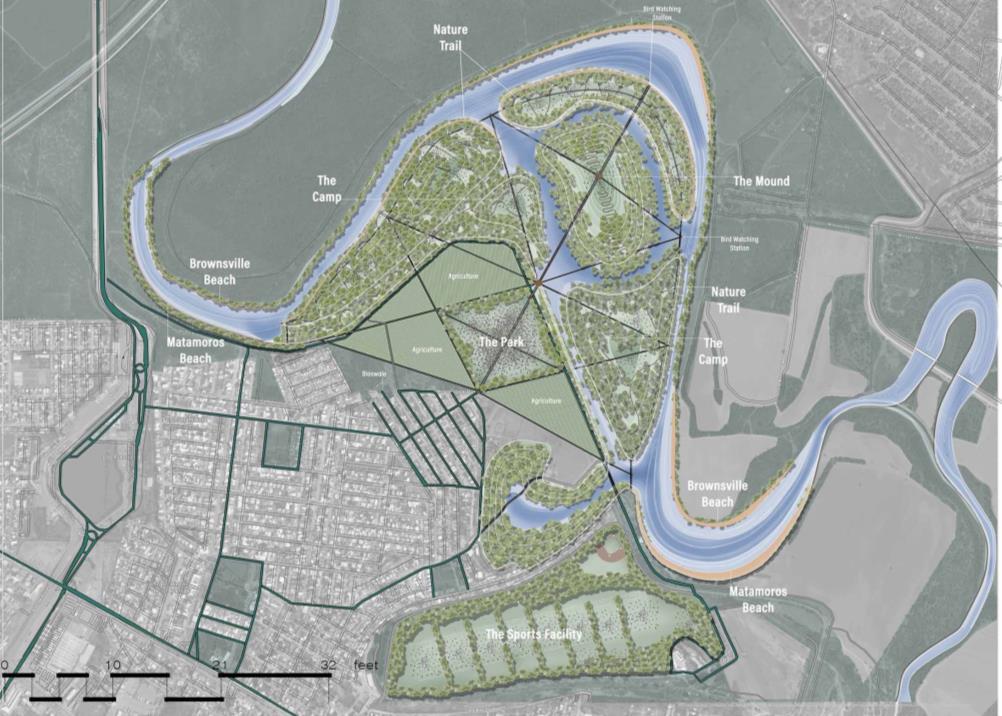
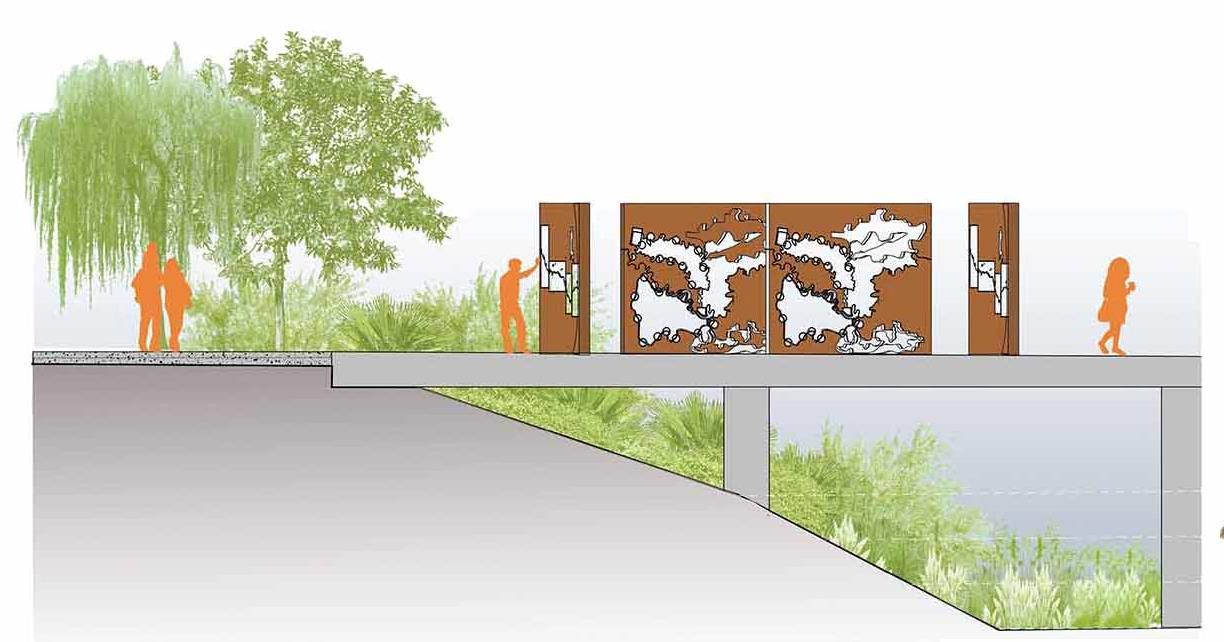
The project will recover its environmental flows service with connectivity, sustainable earthworks, and programming. The connectivity will be presented by a network system that links to public transportation. The earthworks will facilitate the recovery of environmental flows, allowing for bio-physical processes truncated by the military engineering of the river to be reclaimed; and the programming will include the preservation of agriculture, parks, greenspaces, mixed-use lands, hiking and biking trails, and nature and birdwatching infrastructure.
The network created by the project will have the potential for economic growth by creating new ecologically oriented businesses. The greenway to be created engages urban areas and creates patches and corridors of natural habitat and paths also running through rural areas, therefore producing a socio-ecological integration. The systems of flood control, cut and fills, agriculture programs, sports facilities, and a series of trail networks invite people to experience the activity of nature and birdwatching, and habitat revitalization. This project will help neighborhoods and binational, sister, cities to grow economically and socially. This mission will engage both countries to develop an equal opportunity and balanced pattern that affects both people and habitat.
HABITAT LOOPS: REGENERATING THE URBAN MEANDERS OF THE RIO GRANDE / BRAVO
Brownsville, Texas & Matamoros, Tamaulipas, Mexico
Parks, Recreation & Open Space Design: Student - MERIT AWARD
